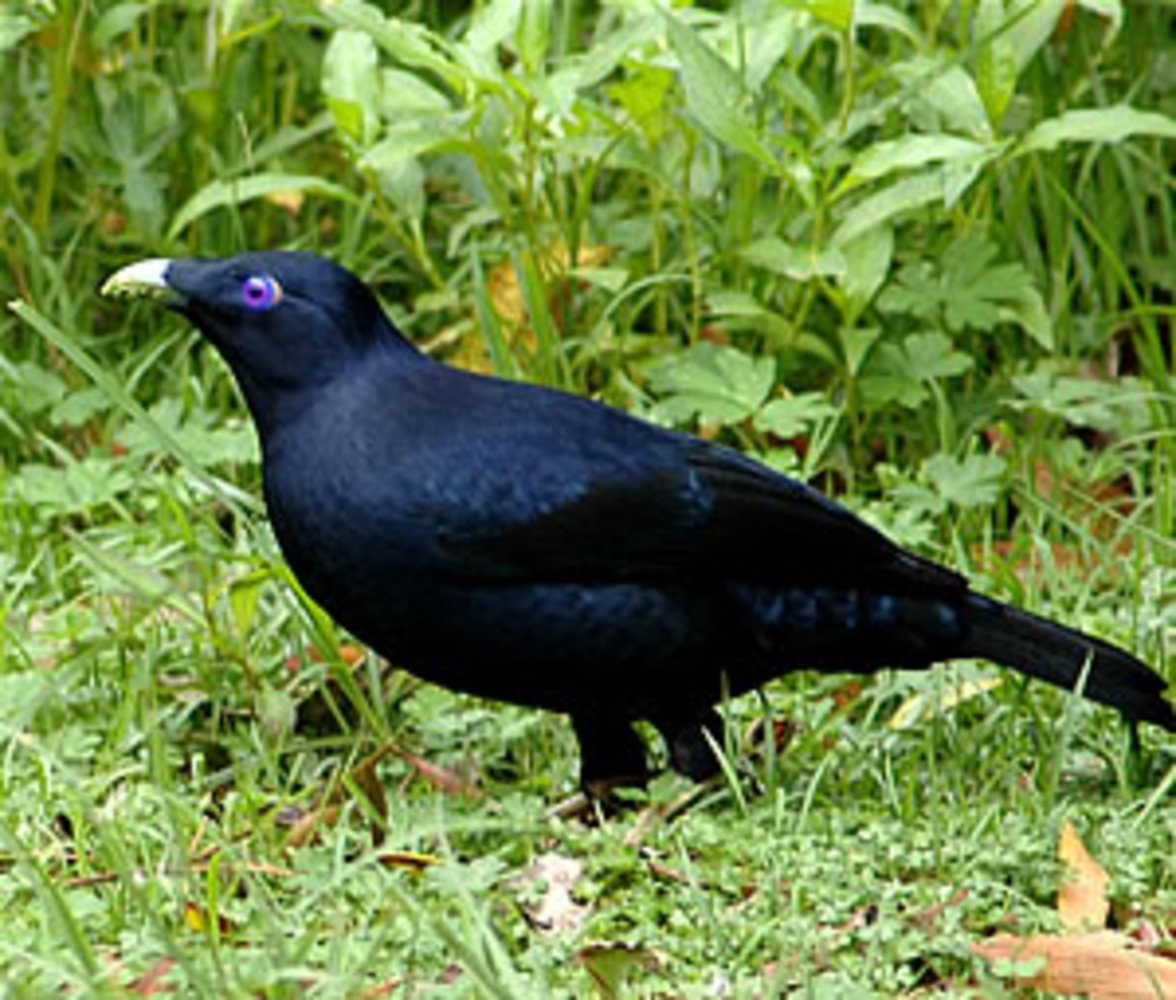Planet Earth - Bower Bird Mimicry
Interview with
Sarah - It's time for this week's Planet Earth and Richard Hollingham has been to Edinburgh Zoo to speak to Edinburgh University researcher, Laura Kelley, who studies Bower birds. These are natives of Australia and Papua New Guinea. They look a little bit like a cross between a crow and a pigeon, and they build impressive Bowers to attract mates. But it also turns out that they are highly impressive mimics...
Laura - The species I work on are spotted Bower birds. They build a long U-shaped Bower. It's about 50 centimetres long and they construct that out of a stick base and then they put grass pieces along the side of the Bower, and then in the middle of this Bower, they put pieces of green glass and clear glass, and then they have a big pile of snail shells at either end.
U-shaped Bower. It's about 50 centimetres long and they construct that out of a stick base and then they put grass pieces along the side of the Bower, and then in the middle of this Bower, they put pieces of green glass and clear glass, and then they have a big pile of snail shells at either end.
Richard - And it's not just that, they also mimic other birds and other animals, other things in the world?
Laura - They mimic up to 14 bird species that we've got recordings of. They definitely mimic a wide variety of sounds and as you mentioned, environmental sounds including people.
Richard - Well let's talk about that mimicry because that's what you've been looking at. I hope it can hear some of these, but first of all, this is what a Bower bird would normally sound like.
Richard - So almost like a hiss-like sound.
Laura - Yeah, it's a very harsh broadband kind of hissing sound and all the Bower birds produce quite a similar kind of harsh sound, and this is the vocalisation that they use when they're communicating with each other.
Richard - But they can also produce the sounds of other birds. This is a kite for instance. This is a real kite.
Richard - But this one is a Bower bird mimicking a kite.
Richard - It's really difficult to tell the difference.
Laura - Yeah, it's very easy to be fooled by them actually, so when we were looking at mimicry, we only classified it as mimicry if we could actually see the bird producing the sound because it is, as you say, very, very accurate.
Richard - But, it's not because other birds that they can mimic?
Laura - They also mimic environmental sounds, so there's reports of them mimicking the sound of dripping water, and twanging fence wire, wings flapping, and also people. I've got a recording of a Bower bird or two Bower birds in fact that mimic a lady calling for her cat, which is called Bonny.
Richard - That's amazing.
Richard - How long did it take for the Bower birds to get that?
Laura - Well, the lady has owned the cat for less than a year, so they picked up in under a year. The lady also calls for the cat at least once a day. So they've only probably had one or two exposures to it daily and then they've picked it up in under a year, so they can obviously learn them moderately quickly.
Richard - And how common is this for Bower birds?
Laura - As far as we know, all Bower bird species mimic. To what extent they all mimic, we're not entirely sure because many of them are in remote locations, we don't always know as much about them as we would like to.
Richard - What do you think is going on here?
Laura - Well, it's not entirely clear to us why this particular species mimics. So, in some of the Bower bird species, they mimic as part of their sexual display. So as well as building their impressive Bowers, they also produce mimicry of other species to attract a lady. With this particular species that I work on, the spotted Bower bird, it could be that they mimic aggressive and predatory species as a way of deterring either potential predators or rival Bower birds. The other thing that it could be is that the sounds that the males mimic are all quite simple and they're very common and loud in the general sound environment. So it could just be they're almost learning these sounds by mistake because they're simple and very loud.
Richard - So they could just be going on anyway and the fact is that there's no disadvantage to the mimicking, rather than there being an evolutionary advantage.
Laura - Exactly, yeah.
Sarah - Laura Kelley from the University of Edinburgh, talking to Planet Earth podcast presenter, Richard Hollingham. And you can download the latest Planet Earth podcast and find links to its host website, Planet Earth Online at the nakedscientists.com/planetearth.









Comments
Add a comment